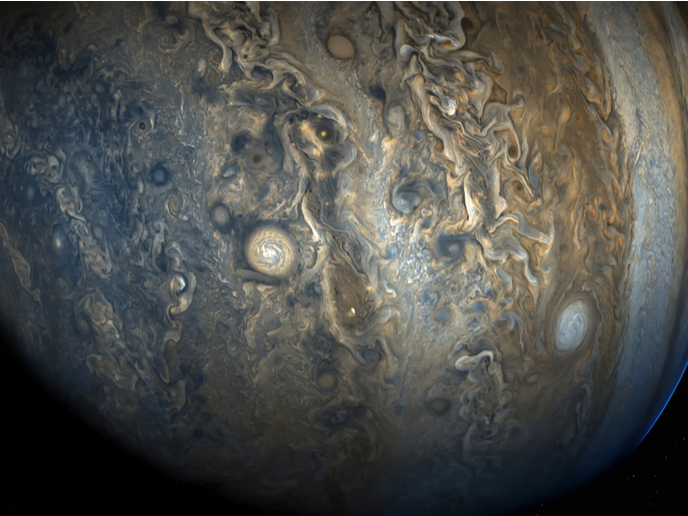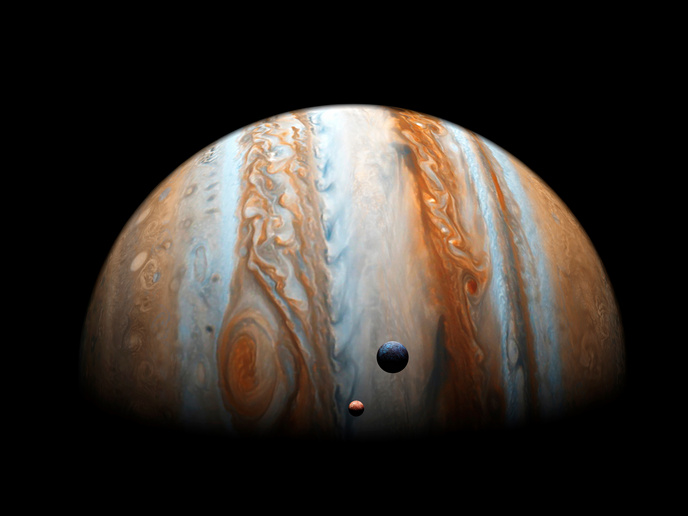A new spin on Jupiter’s stormy weather
Jupiter is a stormy place: the strong winds sweeping the largest planet in our solar system commonly reach 360 km/h. While the gas giant’s zonal jets have been observed for centuries, we have so far been unable to explain what makes these flows so powerful. The EU-funded JUMP (JUpiter Modeling Platform project) has started to finally unravel this mystery. Undertaken with the support of the Marie Skłodowska-Curie Actions programme, the project has been able to demonstrate that the strength of the jets on Jupiter is determined by the rotational energy of the planet.
Hidden dynamics
“So far, it has been accepted that the energetic strength of the zonal jets is directly related to the transformation of solar energy into sources of flow motion,” says Stefania Espa, associate professor of Hydraulics at the Department of Civil, Construction and Environmental Engineering of the Sapienza University of Rome and JUMP project coordinator. However, she points out, this assertion cannot explain why zonal jets on Jupiter are four times stronger than those on Earth, while Jupiter receives 30 times less solar energy. To understand the dynamics behind the formation of zonal jets, the team of researchers created the first laboratory model of a gas giant. They reproduced the flows occurring on Jupiter in the lab, simulating the mechanisms inducing the jet’s formation and investigating the energy transfer that occurs.
Combining expertise and data
To simulate air movements on Jupiter as well as Saturn, another gas giant, the team implemented a platform combining laboratory and numerical modelling. This enabled them to collect large data sets which were made available in open access to fellow researchers. The data collected in the lab and through the numerical simulations was then combined with planetary observations from space missions. The researchers also developed a new diagnostic tool based on potential vorticity to quantify planetary turbulence. It enabled them to show for the first time that energy transfer in Saturn’s atmosphere is four times less intense than in Jupiter’s. Bringing together the expertise of fluid dynamicists, planetologists and climatologists, Espa and her colleagues aimed at developing a new framework linking jet flows to the rotational energy of a planet. “We showed that zonal jets develop through the coupled action of turbulent cascades and of the spherical curvature in planets, the so-called beta effect,” Espa notes. “We also demonstrated that the energetic magnitude of the jets depends on the rotation rate and the planetary radius only.” These findings offer an explanation as to why the zonal jets on Jupiter are stronger than those on Earth, as Jupiter spins 2.4 times faster.
Contribution to climate research
In addition to improving our knowledge of Jupiter’s internal dynamics, the JUMP team’s work could provide important clues for climate research. “Zonal jets are known to play a crucial role in the organisation of the climatic system by transporting heat, humidity, gases and nutrients around the planet,” Espa explains. “A deep understanding of the physics ruling the formation of these jets is a prerequisite for analysing both past and future climate changes.”
Keywords
JUMP, Jupiter, gas giant, zonal jet, laboratory model, numerical modelling, planet, potential vorticity, turbulence, climate change







